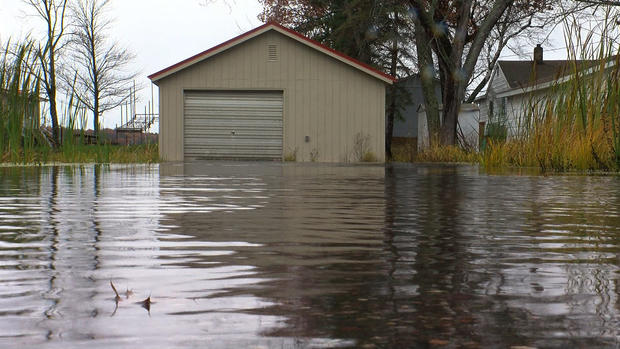'Start Making Plans Now': Hydrologists See Warning Signs Of Major Spring Flooding
MINNEAPOLIS (WCCO) -- Last year's record-setting precipitation, on top of the winter snowfall, has flood watchers on heightened alert, and many considering flood insurance.
While a number of factors go into flood predicting, troubling signs are beginning to appear.
River levels remain higher than normal, and many places went into winter already saturated.
Outside the National Weather Service in Chanhassen, mounting snow piles lend credence to a growing concern. Service Hydrologist Craig Schmidt leads the north central river forecast center.
"The soils are very saturated as they froze up," Schmidt said.
Data is constantly crunched at the center into formulas to help predict spring flooding. The troublesome Red River is already off the charts.
"Chances normally for reaching major flood is about 10%. This year. it's about 80," Schmidt said.
River levels statewide are already abnormally high. But swollen lakes, ditches and marshes could spell trouble for folks far from any river.
"So once we start adding water into it this spring, we're going to see probably some areas that haven't seen flooding in the past be a lot more susceptible this season," he said.
That's why even homes outside of high-risk areas should at least consider federal flood insurance, according to Mark Kulda of the Insurance Federation of Minnesota.
"About a third of all flood insurance claims come from people who don't even live in a high-risk area," Kulda said.
And because there's a 30-day waiting period for policies to take effect, the time to act is fast approaching.
"And if you don't want to buy a full-value policy, you can find policies as little at $200 or $300, so you have at least some coverage," Kulda said.
Flood damage last spring closed Fort Snelling State Park for an entire summer. Once again the concern is growing, like the snow piles along the road.
"Start making plans now because you have to be ready when the melt hits," Schmidt said.
He says last spring was nearly ideal for reducing flooding. Warm March days and cold nights led to a gradual melt, despite the late-season snowfall.




